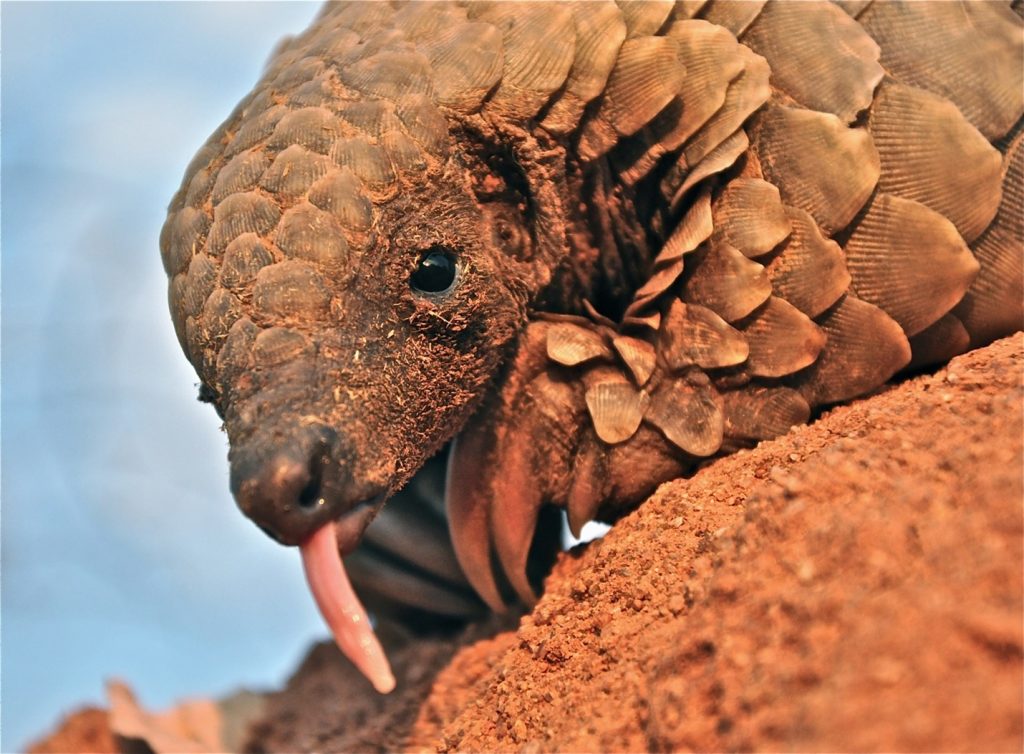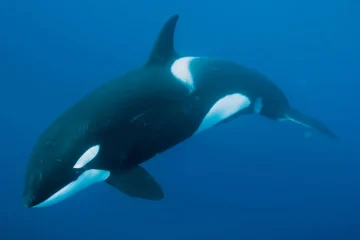Not all shy ones are hidden from the limelight. Being the most trafficked mammal in the world, who rolls into a ball in the sense of a threat, the Pangolin is one of the most well-known animals across the globe. These enigmatic mammals, cloaked in shimmering armor, may resemble miniature armadillos, but their story is far more intriguing.

Pangolins belong to the family Manidae, which has three genera named Manis, Phataginus, and Smutsia. These three genera consist of eight species of pangolins in total. Their habitats are limited to the African and Asian continents.
Pangolins are known as Scaly Anteaters because they are armored mammals with scales covering their bodies, serving as a formidable defense against predators. As mentioned in the beginning, when facing danger, pangolins exhibit defensive behavior similar to armadillos, curling themselves into a tight ball. Additionally, they possess a gland near the base of their tails, from which they can emit a foul-smelling fluid as a defensive tactic. Their distinctive appearance alone makes them worthy of admiration, resembling a creature straight out of a fantasy realm.

These shy and nocturnal animals spend their nights foraging for ants and termites with their long, sticky tongues. Their long snouts are incredibly helpful with their mission of finding insects. The pangolins, as insectivores, play a crucial role in regulating insect populations, thus maintaining ecological balance within their habitats. In essence, pangolins are nature’s pest control experts, silently working behind the scenes to keep ecosystems functioning harmoniously. Pangolins are often found in sandy environments like savannas and wooded areas, preferring to inhabit regions near water sources. Some species of these mysterious creatures are arboreal, indicating they reside and forage for food in trees.
Pangolins are usually found as single animals unless they are ready to bring the next generation to the world. Their babies are born with soft scales, and after two days from their birth, those scales become hardened. These infants get to ride on their mother’s tail or back for their protection.

Despite their ecological significance, pangolins face a myriad of threats that jeopardize their survival. The illegal wildlife trade, driven by demand for their scales and meat, poses a grave danger to pangolin populations worldwide. Tragically, they are among the most trafficked mammals on the planet, with millions falling victim to poaching each year. Such exploitation not only decimates pangolin populations but also disrupts the delicate ecological equilibrium they help maintain. Due to these unfortunate circumstances, pangolin species are listed from critically endangered to vulnerable on the IUCN Red List.
Efforts to protect pangolins have gained momentum in recent years, with conservation organizations and governments working tirelessly to combat poaching and trafficking. Public awareness campaigns have shed light on the plight of pangolins, rallying support for their conservation. Additionally, international agreements such as the Convention on International Trade in Endangered Species of Wild Fauna and Flora (CITES) have imposed regulations to restrict the trade of pangolins and their derivatives.
Remember, every pangolin matters. These amazing creatures play a vital role in their ecosystems, controlling insect populations and maintaining healthy forests. Let’s join forces to ensure that future generations can still marvel at the sight of a pangolin freely roaming its forest home. Together, we can rewrite the story of the pangolin from one of tragedy to one of triumph.
Written by:
Aseni Perera
2nd Year Undergraduate,
Biological Science Stream,
Faculty of Science,
University of Colombo.
References:
- Pangolins: the most trafficked mammal you’ve never heard of. (n.d.). [Video]. Animals. https://www.nationalgeographic.com/animals/mammals/facts/pangolins
Image Courtesy:
- Title Image: https://bitly.ws/3drnw
- 1st Content Image: https://bitly.ws/3drn2
- 2nd Content Image: https://bitly.ws/3drmU
- 3rd Content Image: https://bitly.ws/3drnb



0 Comments